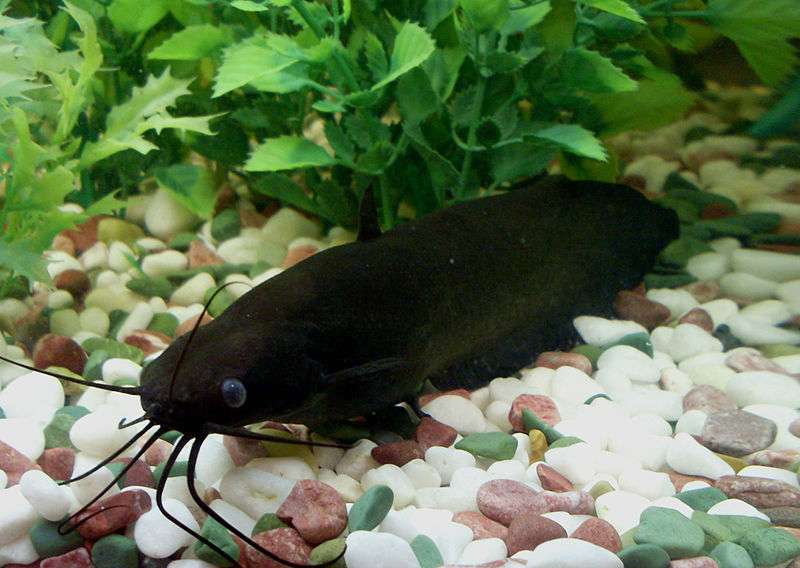
Physical Characteristics and Behavior
body compression and lengthening Osseous plate covering the top and sides of the skull on a depressed head. Barbels come in four pairs, with mandibulotomies extending to the base of the pelvis and maxillary pairings extending to the end of the pectorals or the beginning of the anals. Nevertheless, mandibular pairs are substantially longer than nasal teams. Two additional respiratory organs (air sacs) that protrude posteriorly from the gill chamber on either side of the vertebral column are a significant anatomical feature. There is a rounded caudal curvature. The body is reddish brown or purplish brown in color, while adult individuals look black.
Keeping as Pet

- Water Conditions
To properly spawn, H. fossilis needs a temperature range of 29–31 degrees Celsius, 350–380 millimeters of rainfall, 5.0-6.0 milligrammes of dissolved oxygen per litre, and a pH of 7.1-7.5.
- The Aquarium Size
One of these would require a tank with a minimum dimension of 48″ x 18″ x 18″ (120″ x 45″ x 45″; 243 litres).
- Maintenance
Does well in a tank with dim lighting, lots of hiding spots, and some open swimming areas. Smooth rocks, driftwood, lengths of plastic piping, etc. can be used to furnish this. Make sure the tank’s cover fits snugly because it has been observed in nature to aggressively travel brief stretches of dry land in search of freshwater. Thus, given the chance, it can and presumably will flee. Given the volume of waste it generates, filtration needs to be robust and effective.
- Diet
Not a challenge to feed. Most sinking dried, live, and frozen foods will be accepted. Make an effort to make sure it obtains a sufficient amount of meaty food, such as chopped prawns, bloodworms, earthworms, and similar items. Many species will surface to feed once they have settled in.
- Proper behavior and Compatibility
With comparable sized or larger, active species, it is very tranquil, while smaller tank mates will surely be eaten. The best options are those that live in various parts of the tank, like larger characins or cyprinids. Other benthic or sluggish fish provide a bigger issue since they can be bothered by its nighttime activity. Unexpectedly, it’s a social fish that thrives in small groups.
Table





